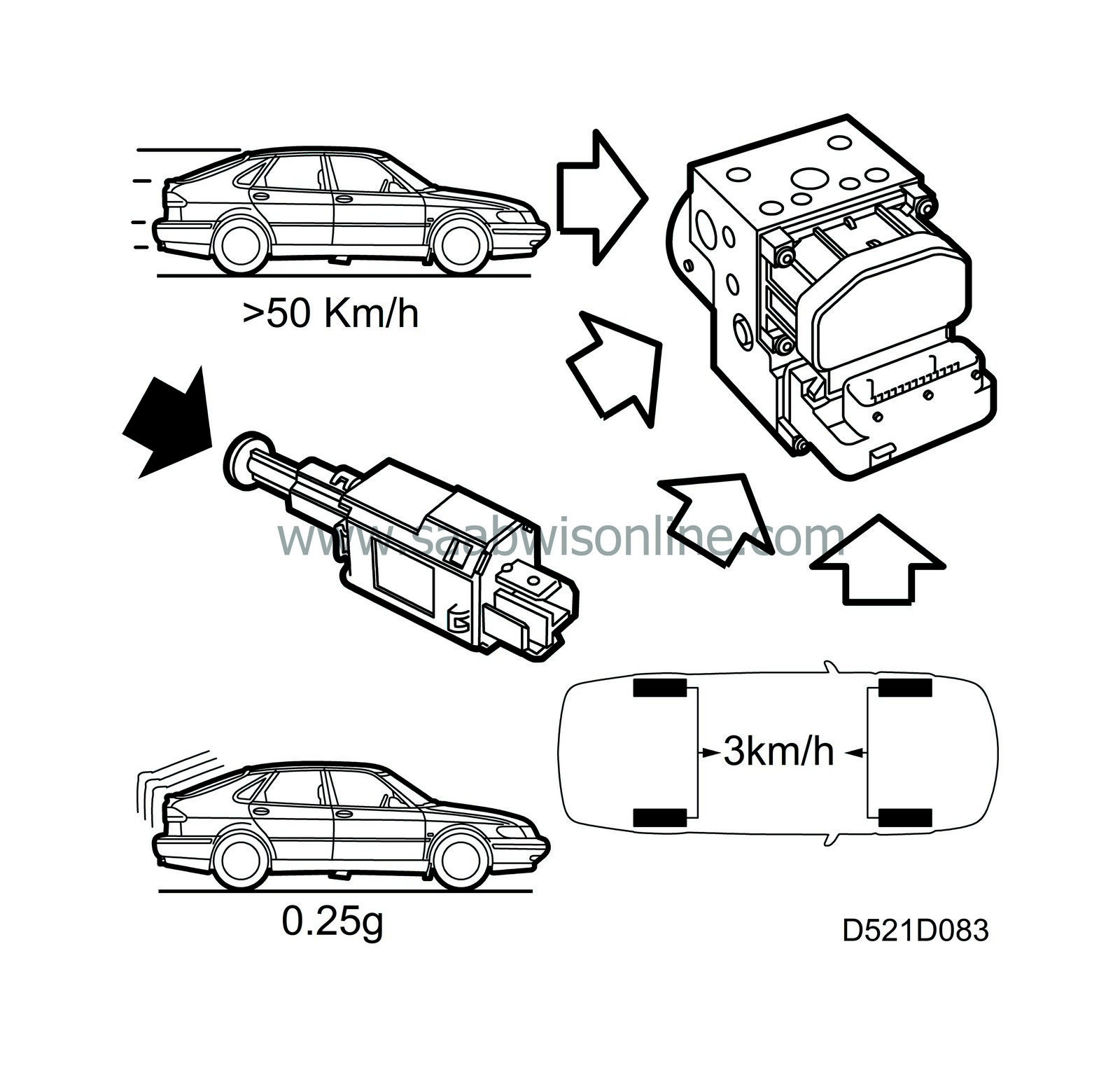EBD (Electronic Brake-force Distribution)
| EBD (Electronic Brake-force Distribution) |
The EBD function comes into play before the normal ABS mode and usually enhances ride comfort for the vehicle occupants.
For good directional stability, the rear wheels must not be allowed to lock-up before the front ones. Because it takes a greater braking force to lock the wheels on a heavily loaded car, for instance, the control module monitors the wheel speed and, via the solenoid inlet valves, modulates the brake pressure to the rear wheels to ensure that the relative slip between the front and rear wheels does not exceed 3 km/h.
The EBD function will not become operative unless the following criteria are met:
| • |
The road speed of the car is greater than 50 km/h.
|
|
| • |
The control module receives a signal from the brake-light
switch telling it that the brake has been applied.
|
|
| • |
The retardation force is greater than 0.25 g.
|
|
| • |
The relative slip between the front and rear wheels is greater
than 3 km/h.
When these criteria have been met, the rear-wheel inlet valves close and the EBD function is activated to keep the relative slip to below 3 km/h. If any wheel tends to lock during EBD modulation, the control mode switches to normal ABS modulation. |
|



